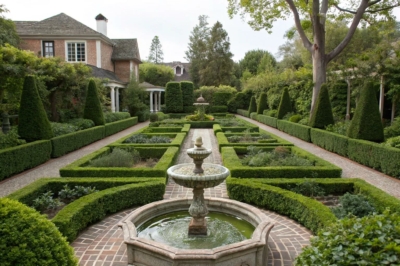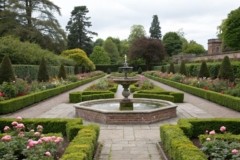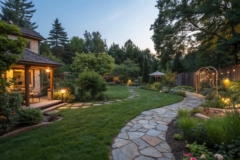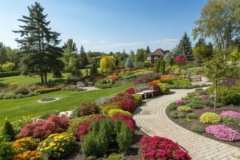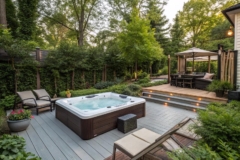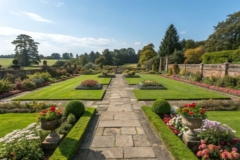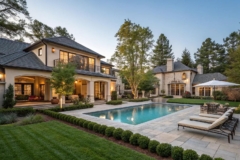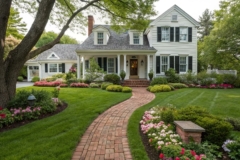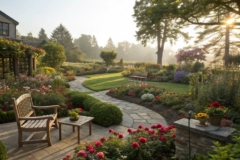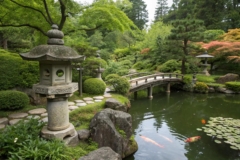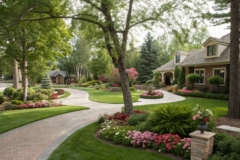1. Define with Hedge Borders
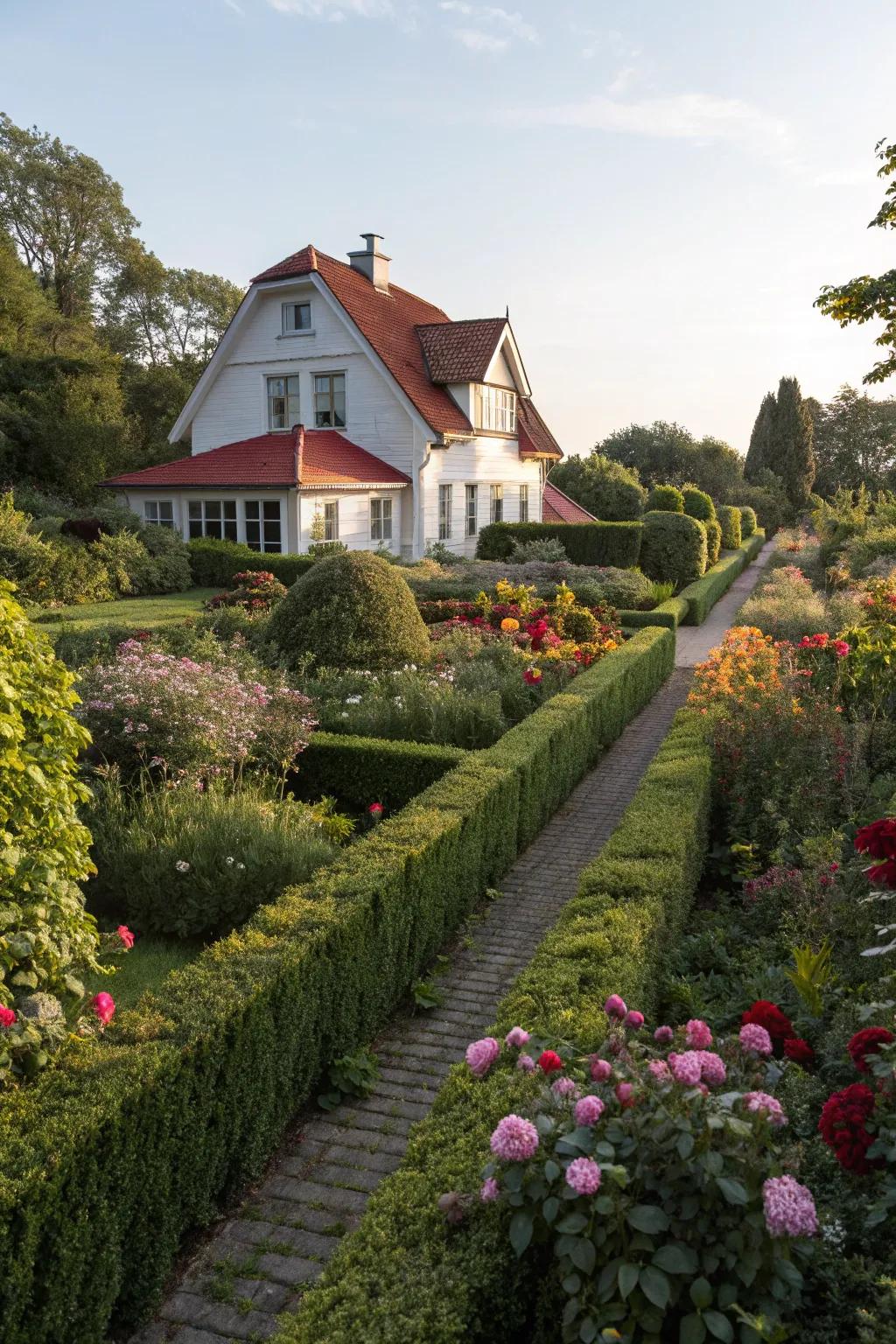
Use hedge borders to give form and structure to your garden. In my experience, well-trimmed hedges create a neat outline that frames the garden beautifully.
These products might help:
- Electric Hedge Trimmer: Easily maintain your hedge borders with precision and efficiency. Perfect for a well-trimmed look.
- Hedge Shears: Achieve sharp, clean cuts for detailed garden designs using sturdy and durable hedge shears.
- Boxwood Hedge Plants: Create stunning borders with lush boxwood plants known for their dense, evergreen foliage.
2. Include Seasonal Planters
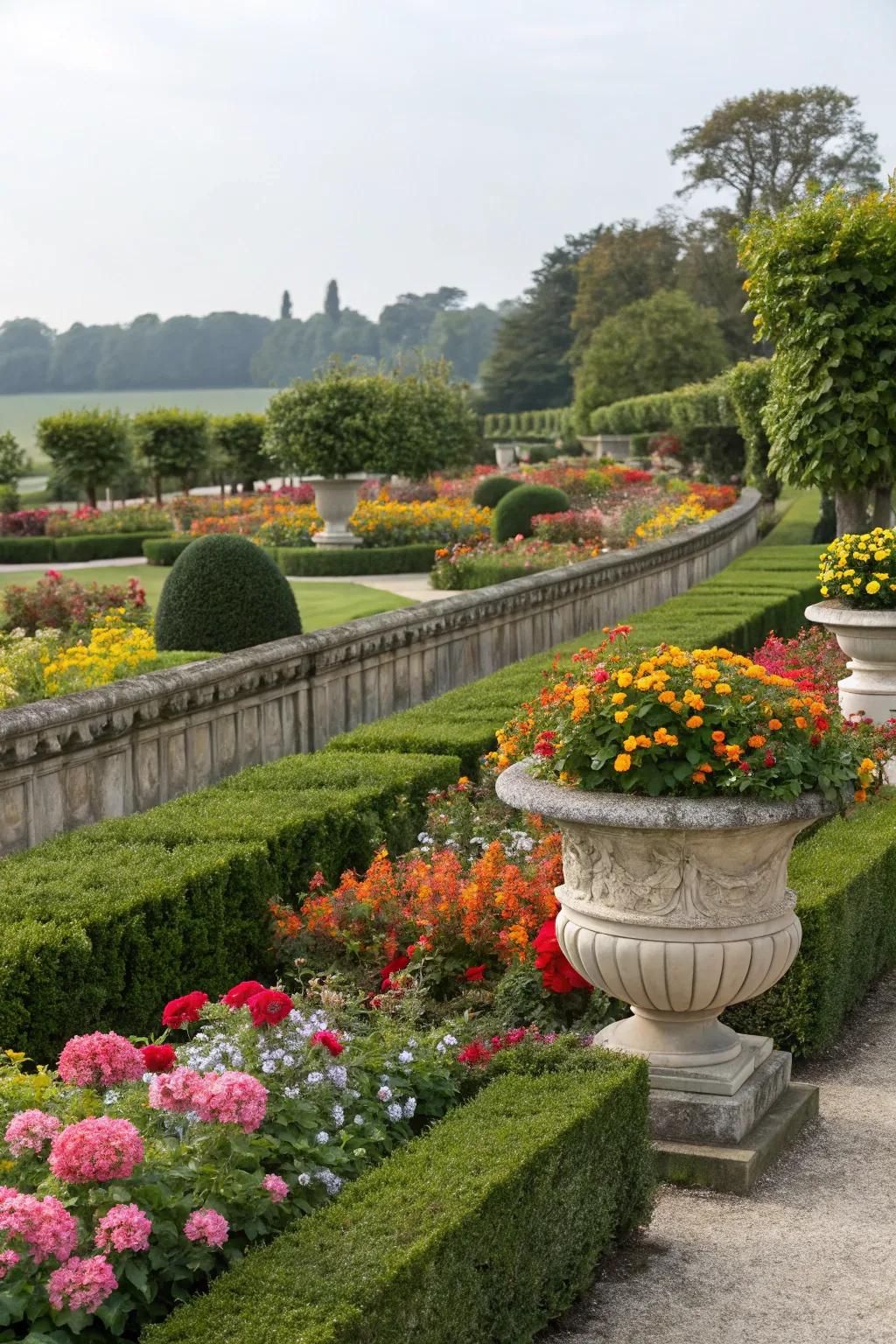
Use seasonal planters to introduce new colors and textures throughout the year. They allow for flexibility and creativity, much like the rotating displays in my garden.
Useful items to consider:
- Elegant Stone Planter Urn: Enhance your garden with sophisticated stone urns, perfect for seasonal floral displays year-round.
- Weather-Resistant Large Planters: Add versatile large planters to your landscape for vibrant seasonal color and texture changes.
- Decorative Pedestal Planters: Elevate your garden design with stylish pedestal planters, ideal for showcasing seasonal plants.
3. Create Inviting Pathways
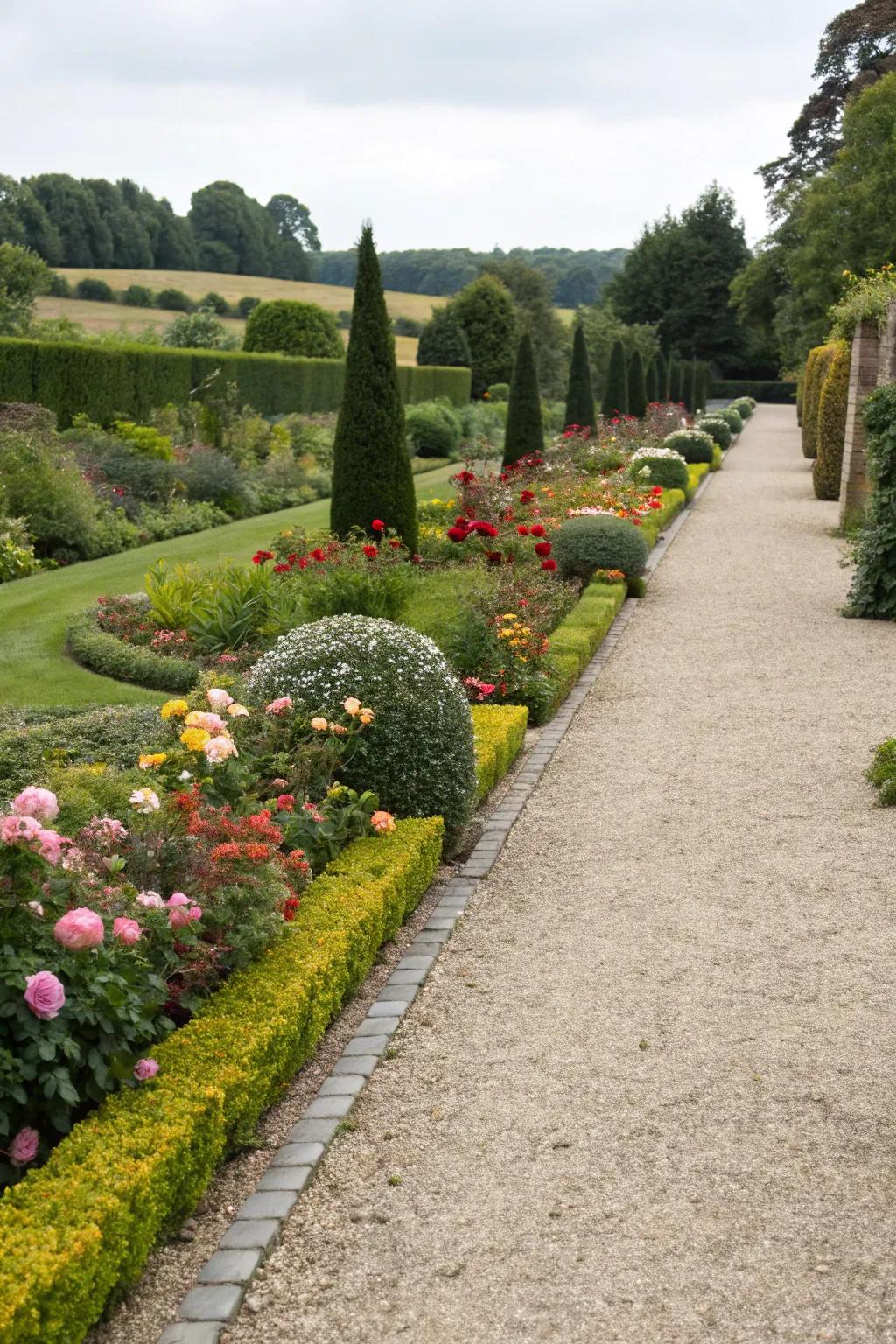
Lay down gravel or stone pathways to lead visitors through your garden. These pathways can highlight different areas and create a sense of journey, just like the ones winding through my garden.
A few relevant products:
- Decorative Gravel Stones: Enhance your garden with charming gravel stones, creating elegant and inviting pathways effortlessly.
- Natural Stone Pavers: Transform your garden with durable stone pavers, adding a classic touch to your pathways.
- Garden Edging Border Kit: Define your pathway edges with sleek garden border kits for a polished landscape appearance.
4. Embrace Symmetry
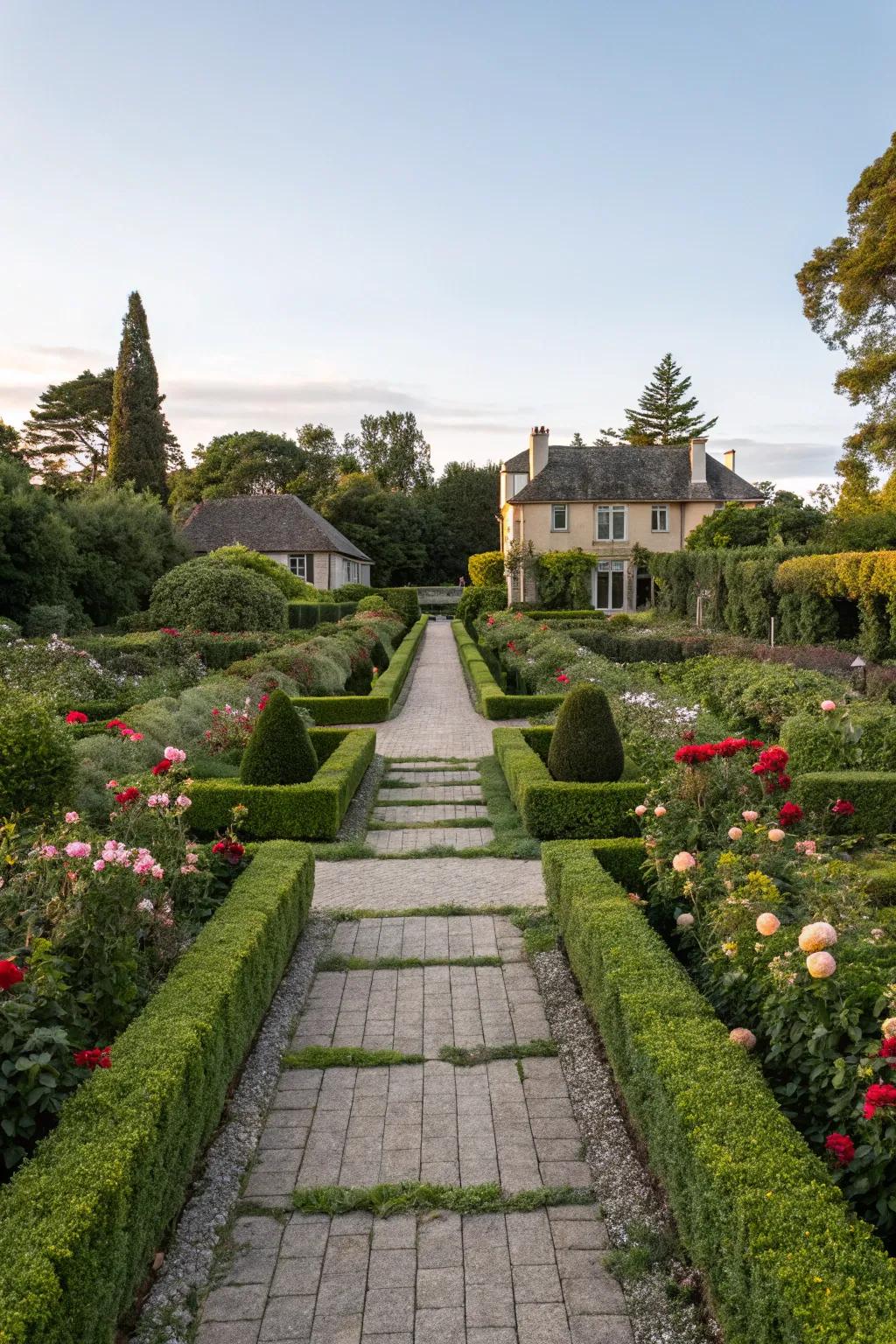
Start your formal garden with symmetrical layouts that echo the architecture of your home. This approach naturally guides the eye and establishes harmony, much like the gardens I’ve designed in my own backyard.
May just do the trick:
- Decorative Garden Statues: Enhance your garden’s elegance with symmetrical statues, creating a focal point of sophistication.
- Hedge Trimmers: Achieve perfectly shaped hedges easily with precise trimming tools for a symmetrical garden look.
- Pathway Pavers: Design your garden pathways with uniform pavers, guiding the eye in elegant symmetry.
5. Design a Parterre
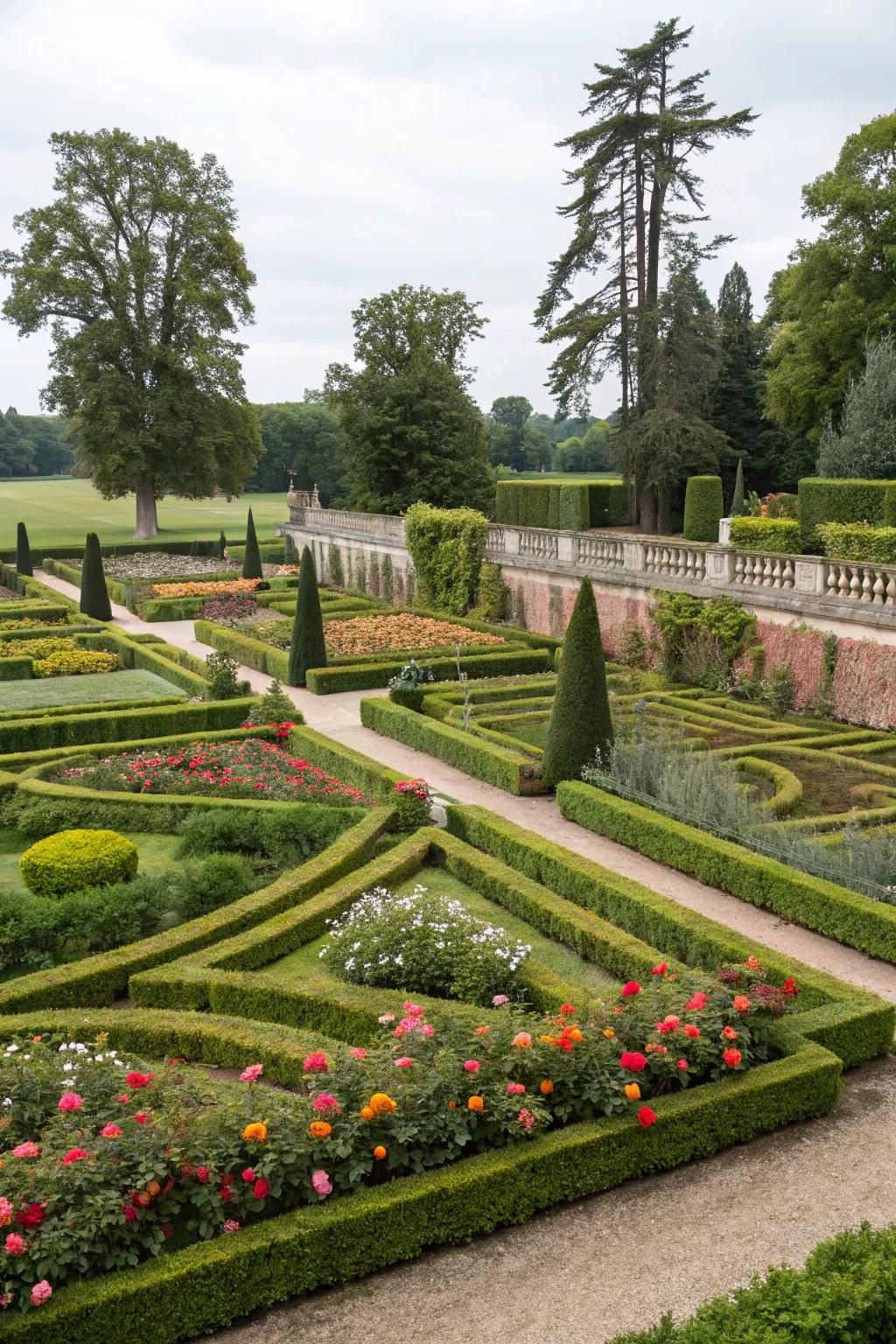
Consider a parterre garden for a touch of classic elegance. With its geometric patterns, a parterre can bring both formality and beauty, something I’ve always admired in traditional designs.
Some handy options:
- Boxwood Hedge Plants: Cultivate defined borders by planting these evergreen hedge plants for a classic parterre look.
- Garden Edging Tools: Use these edging tools to create sharp geometric patterns in your parterre garden effortlessly.
- Landscape Fabric: Lay down landscape fabric to prevent weeds, keeping your parterre looking pristine and well-maintained.
6. Balance Formality with Nature
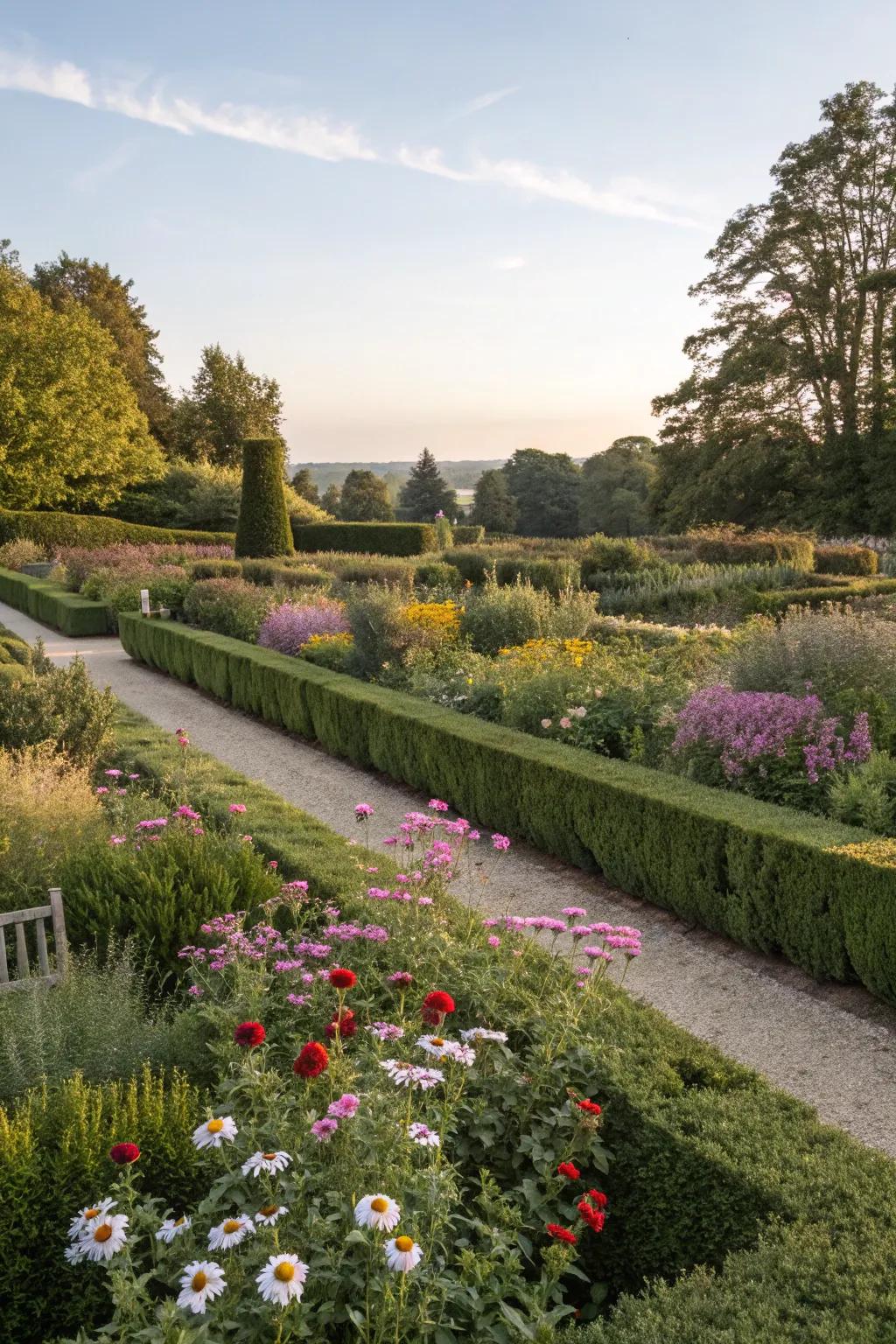
Let natural elements soften the formality by allowing some areas to be slightly wild and untamed. This balance brings vibrancy and life, a philosophy I’ve embraced in my own designs.
Possibly helpful picks:
- Wildflower Seed Mix: Infuse life and color into your garden by planting diverse wildflower seeds in strategic spots.
- Natural Pebble Pathway Stones: Create charming paths through your garden with these natural stones, blending formality with nature.
- Rustic Wooden Garden Bench: Enhance your garden’s appeal with a rustic bench, offering a place to enjoy nature’s beauty.
7. Incorporate Topiary
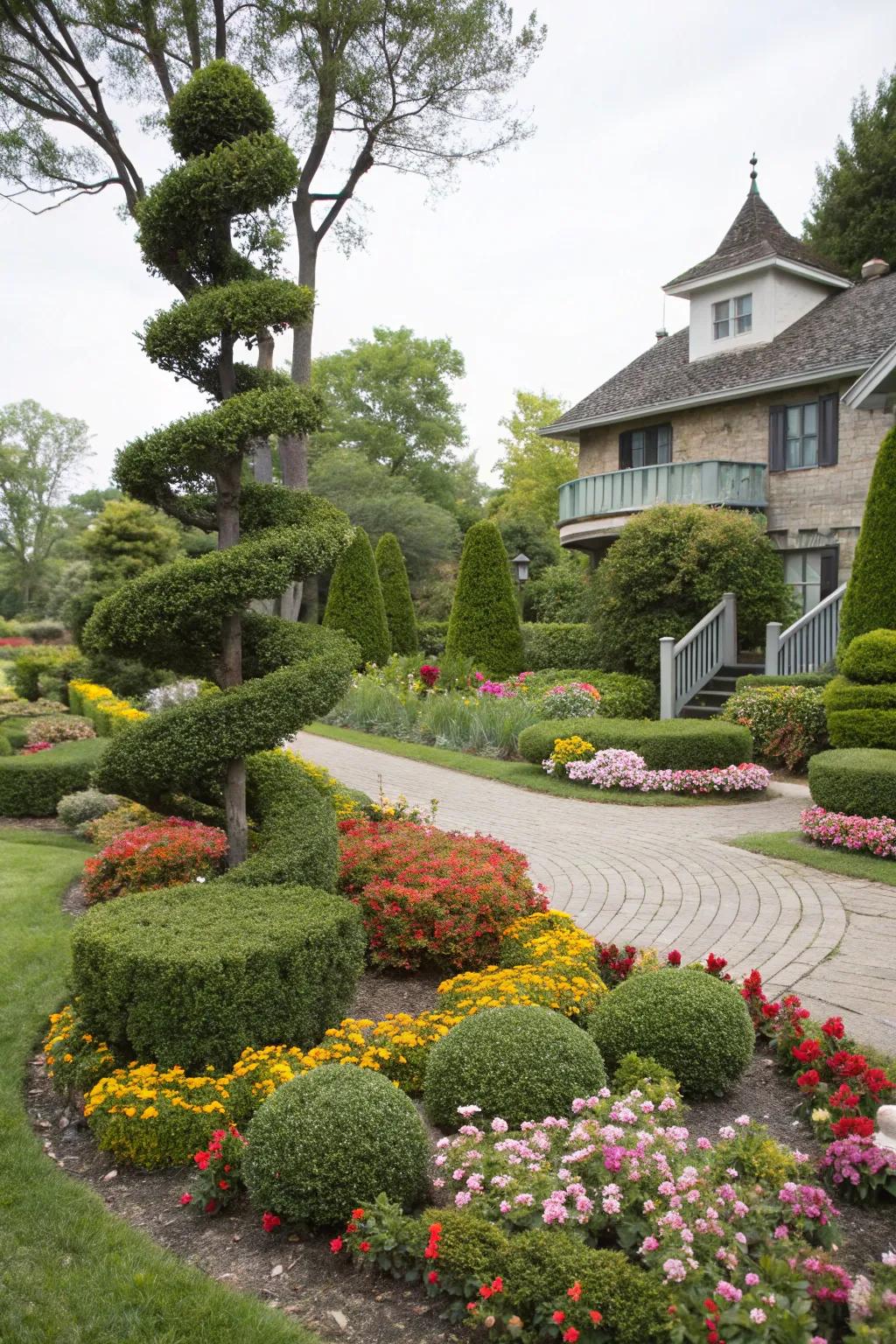
Topiary adds an element of artistry to your landscape. I’ve found that topiary shapes like spirals or globes can add a whimsical yet formal touch to any garden.
Might be a good match:
- Topiary Shears: Enhance your garden’s elegance by trimming your topiaries with precision. Perfect for intricate designs.
- Spiral Topiary Trees: Add a whimsical touch to your garden with pre-shaped spiral topiary trees. Easy to maintain.
- Boxwood Globe Topiary Plants: Create a formal garden look with lush boxwood globe topiary plants. Ideal for any landscape.
8. Incorporate Statues

Add garden statues for a touch of whimsy and formality. These can serve as conversation pieces, much like the charming figures that dot my landscape.
A few choices to try:
- Classic Greek Lady Garden Statue: Add elegance to your garden with this classic Greek lady statue, enhancing your landscape’s charm.
- Garden Angel Sculpture: Incorporate serenity and beauty with a garden angel sculpture, perfect for a formal landscape.
- Abstract Modern Outdoor Statue: Embrace modern aesthetics with this abstract outdoor statue, creating a sophisticated focal point.
9. Try Vertical Gardening
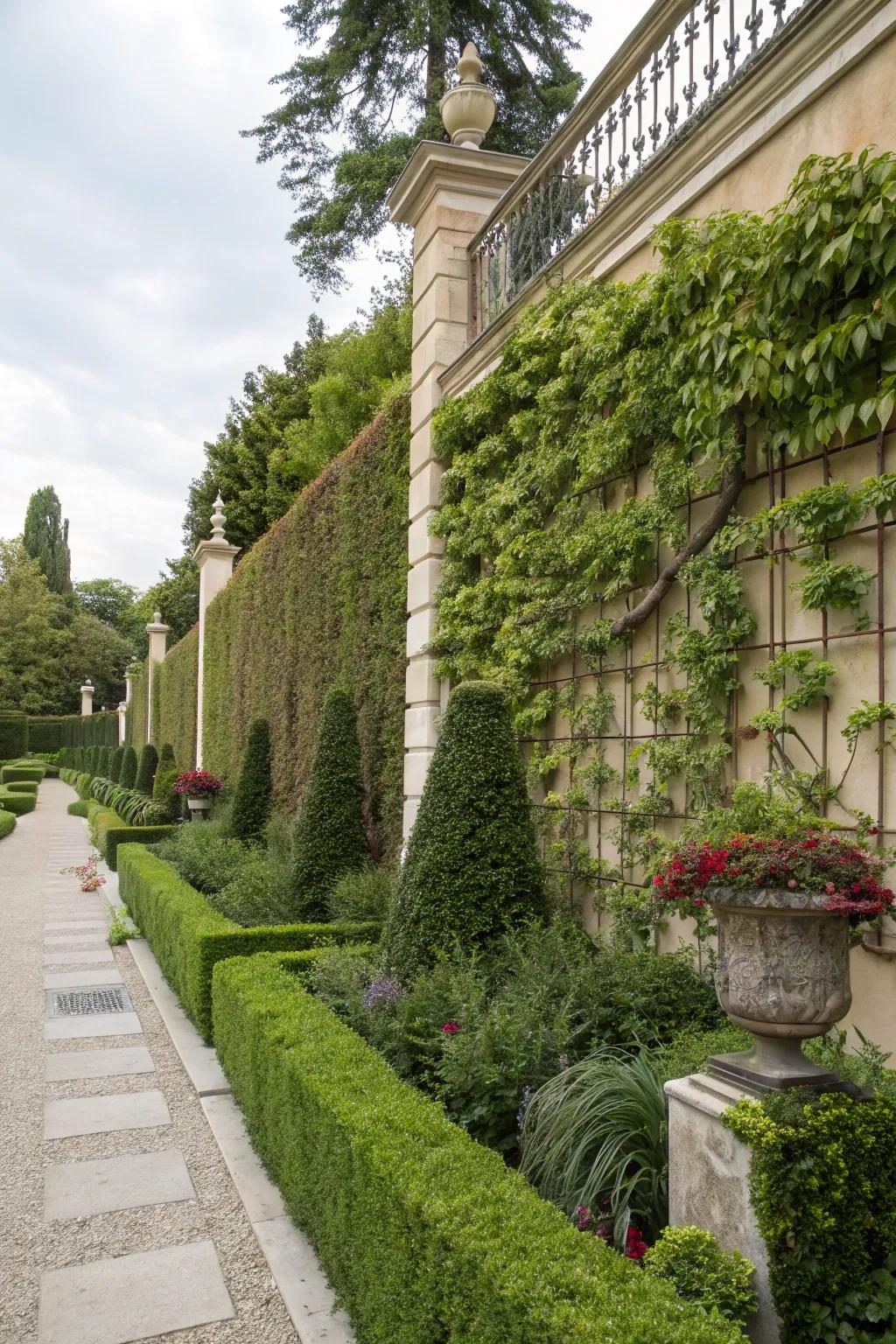
Use vertical gardens to maximize space and add interest. This technique can turn even small areas into lush retreats, as I’ve successfully done on my patios.
You might like:
- Wall-mounted Planter Panels: Enhance your outdoor space with wall planters and create a lush vertical garden effortlessly.
- Climbing Plant Support Trellis: Install a trellis to support climbing plants and transform your walls into vibrant green displays.
- Self-watering Vertical Garden Kits: Enjoy hassle-free gardening with self-watering kits designed for vertical arrangements on walls.
10. Introduce Focal Points
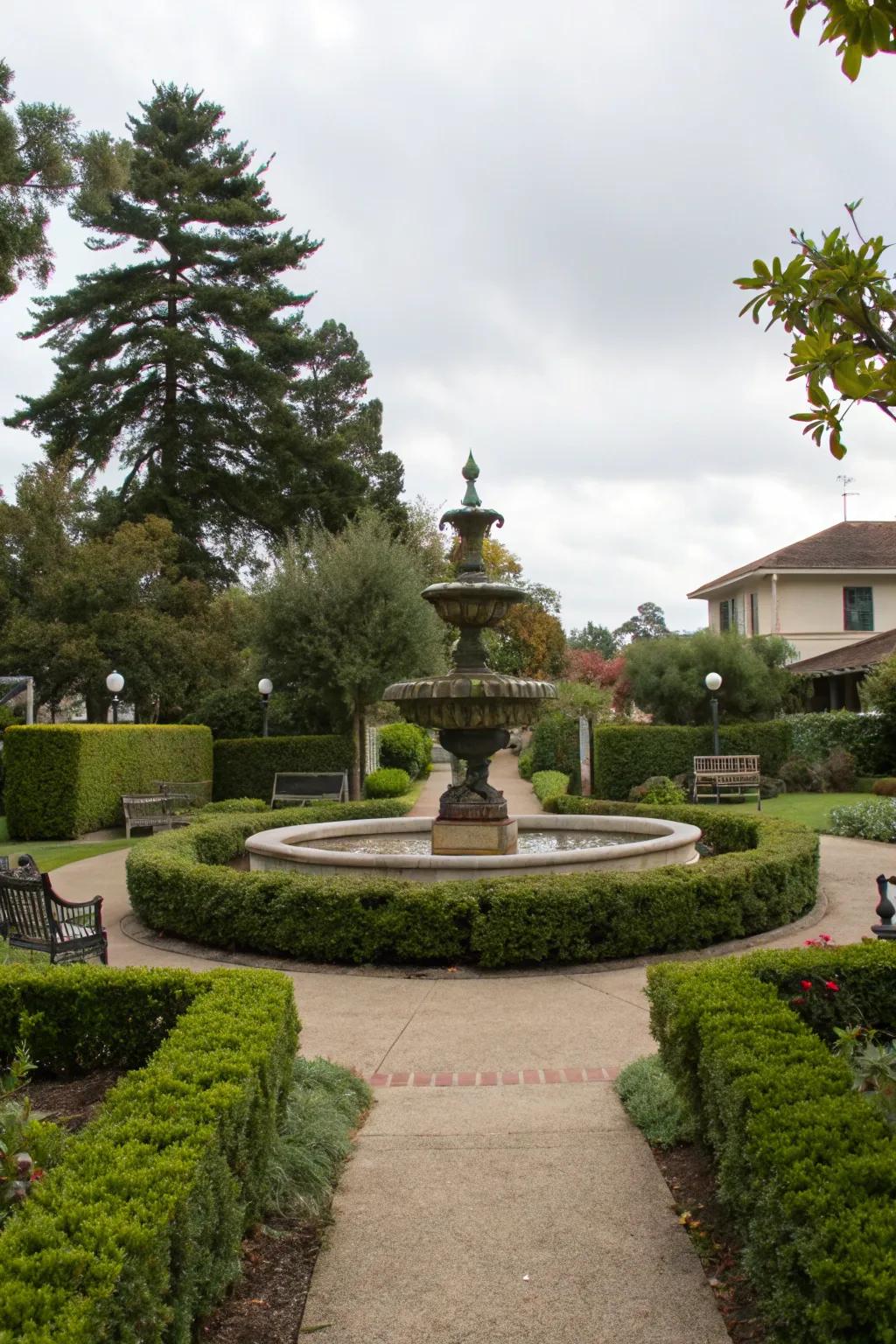
Place focal points such as sculptures or fountains to draw attention. These elements can serve as the heart of your garden, much like the fountain that anchors my own space.
Consider these options:
- Outdoor Garden Water Fountain: Elevate your garden with a stunning water fountain to create an eye-catching focal point.
- Decorative Garden Sculpture: Add elegance to your landscape with a decorative sculpture as a captivating focal element.
- Solar-Powered Garden Lights: Illuminate focal points with solar garden lights to enhance your landscape’s visual appeal.
11. Install Lighting
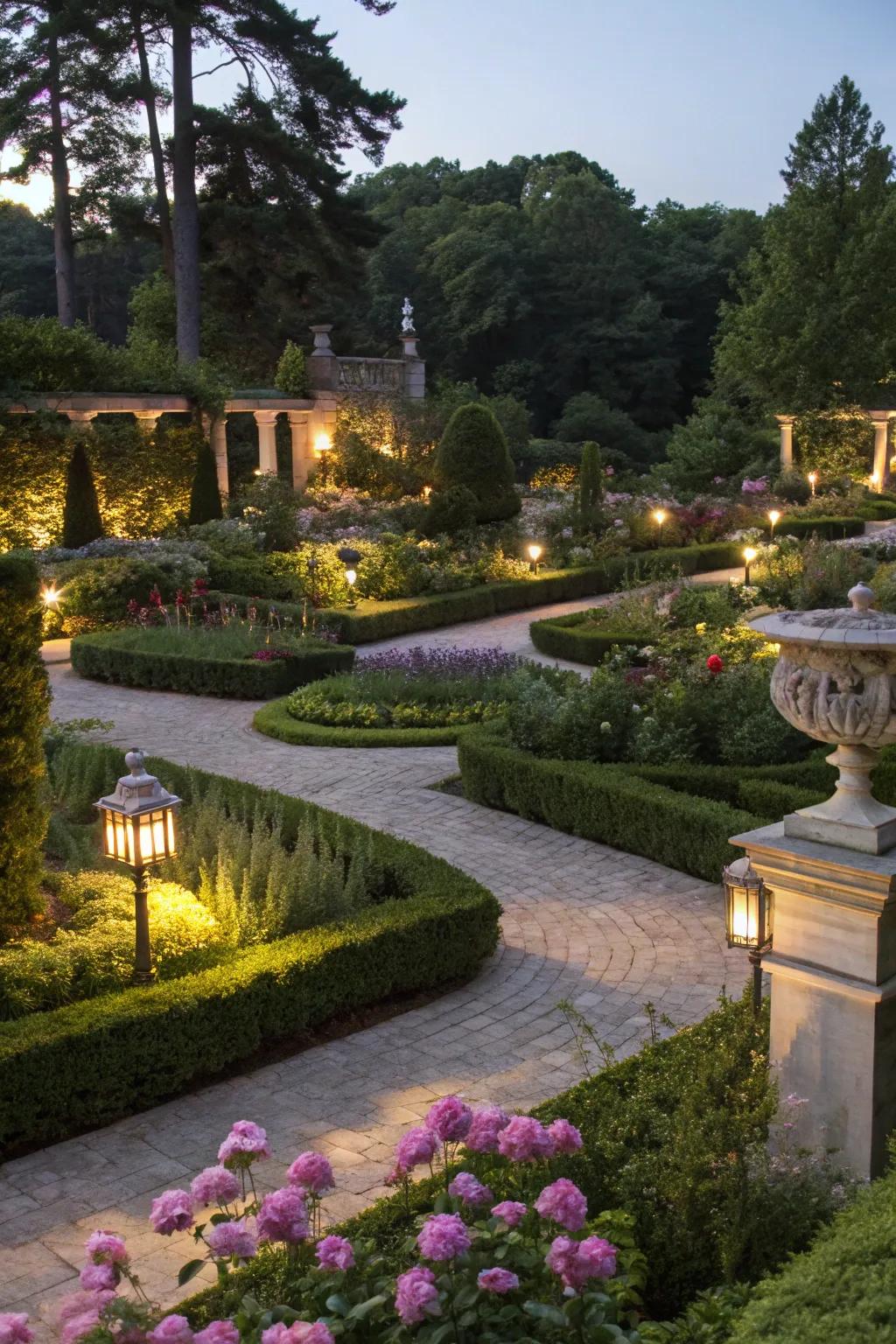
Strategic garden lighting can transform your space in the evening. I’ve found that well-placed lights highlight key features and create a magical ambiance.
A few helpful options:
- Solar Garden Pathway Lights: Illuminate your garden path effortlessly with energy-efficient solar lights for an enchanting evening look.
- LED Outdoor Spotlights: Highlight key features with adjustable LED spotlights for a dramatic garden transformation at night.
- Decorative Lantern Post Lights: Add classic charm and visibility to your garden with elegant lantern-style post lights.
12. Create Private Nooks
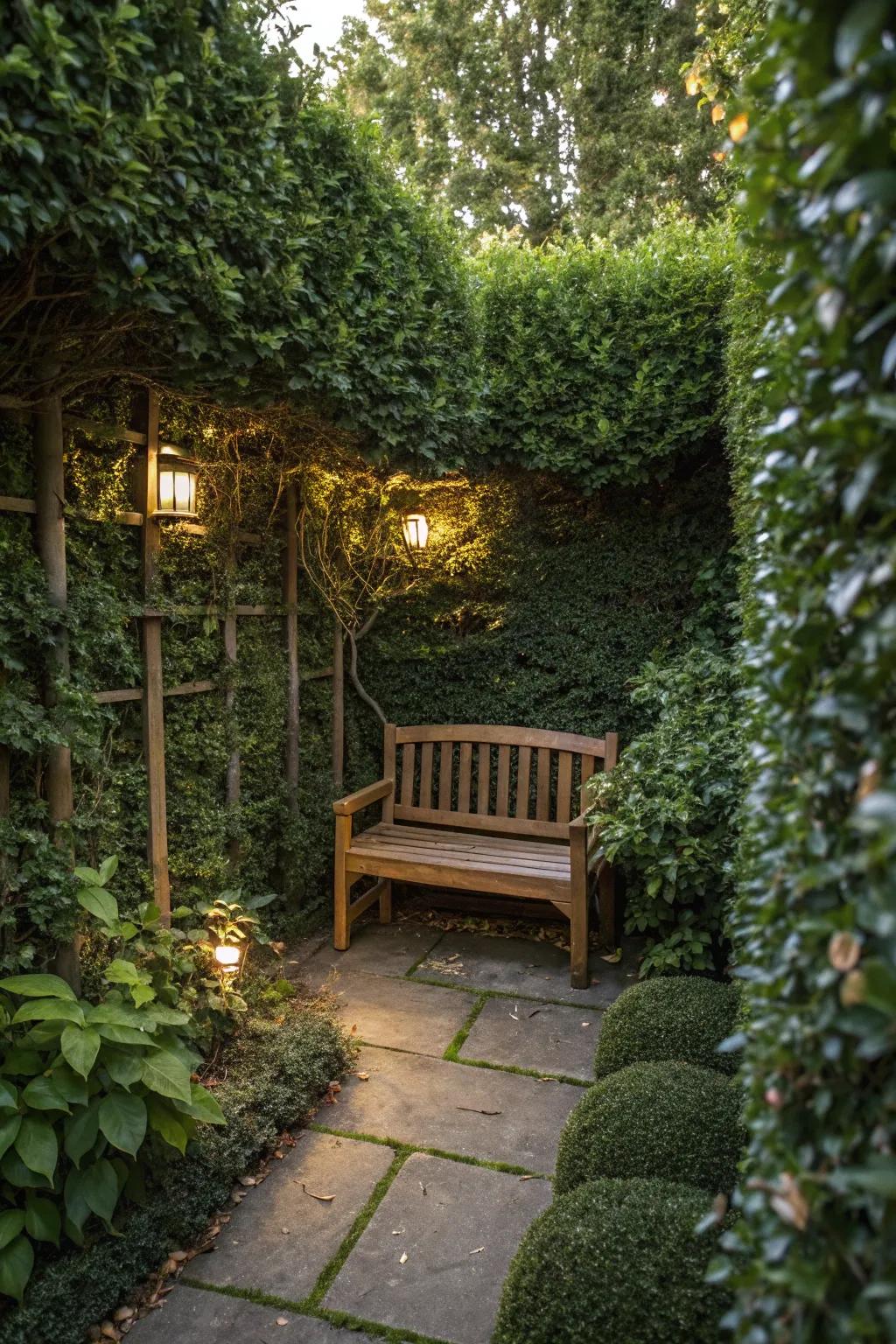
Design private nooks with seating areas tucked away behind hedges. These spots offer cozy retreats, much like the inviting corners in my garden.
These products might be useful:
- Wooden Garden Bench: Add charm with a wooden garden bench, ideal for creating serene, private seating areas.
- Outdoor Wall Lanterns: Enhance ambiance with outdoor wall lanterns, perfect for illuminating cozy garden nooks.
- Boxwood Shrub: Create natural privacy with boxwood shrubs, perfect for establishing secluded garden escapes.
13. Use Water Features
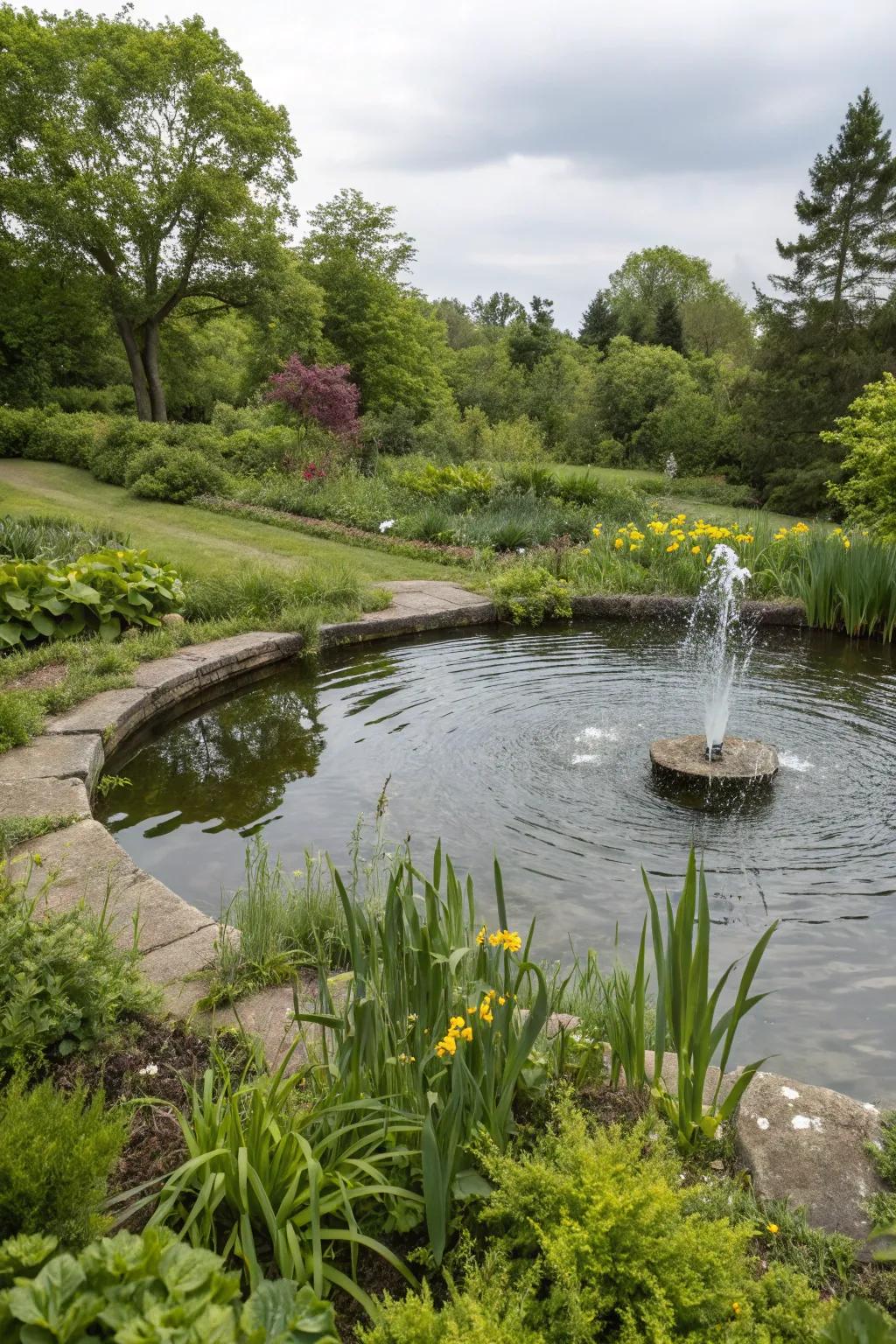
A water feature adds elegance and tranquility to any formal garden. The gentle sound of water can turn a garden into a serene oasis, as I’ve experienced in my own spaces.
You might give these a try:
- Outdoor Garden Fountain Pump: Enhance your garden’s ambiance with this quiet, energy-efficient fountain pump. Create a peaceful retreat.
- Solar-Powered Water Fountain: Add an eco-friendly touch to your garden with a solar-powered water fountain. Enjoy sustainability.
- Decorative Garden Pond Kit: Transform your garden with a complete pond kit. Easy to install and maintain for lasting beauty.
14. Add Architectural Elements
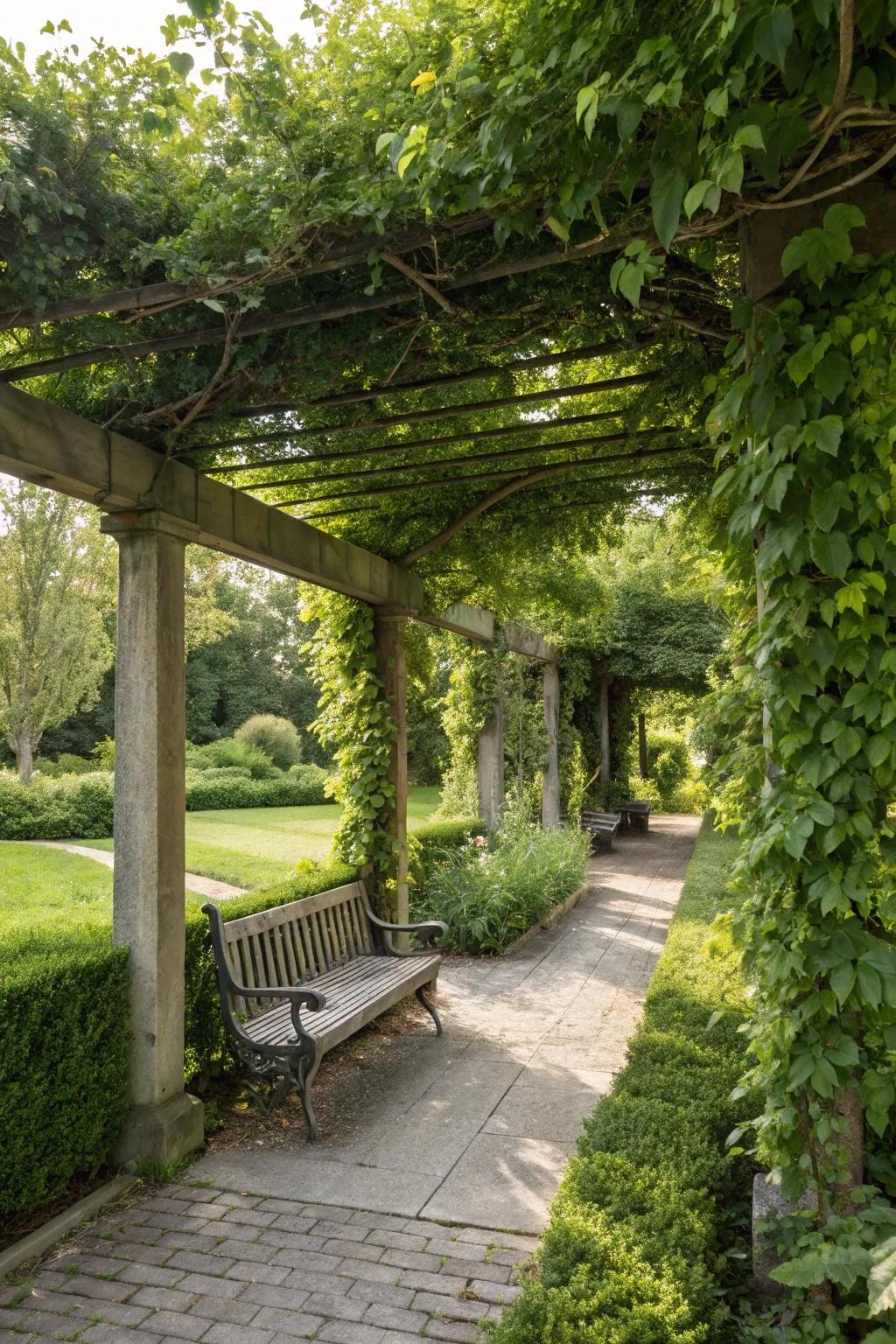
Incorporate architectural elements like pergolas or benches. These features not only add utility but also enhance the garden’s aesthetic, just like the cozy corners in my backyard retreat.
Check these products out:
- Garden Pergola: Transform your garden space with a durable pergola for shade and charming aesthetics.
- Outdoor Garden Bench: Relax in style with a comfortable and elegant garden bench, perfect for any outdoor setting.
- Climbing Plant Trellis: Enhance vertical beauty by adding a sturdy trellis for vibrant climbing plants in your garden.
15. Mix Evergreen and Flowering Plants
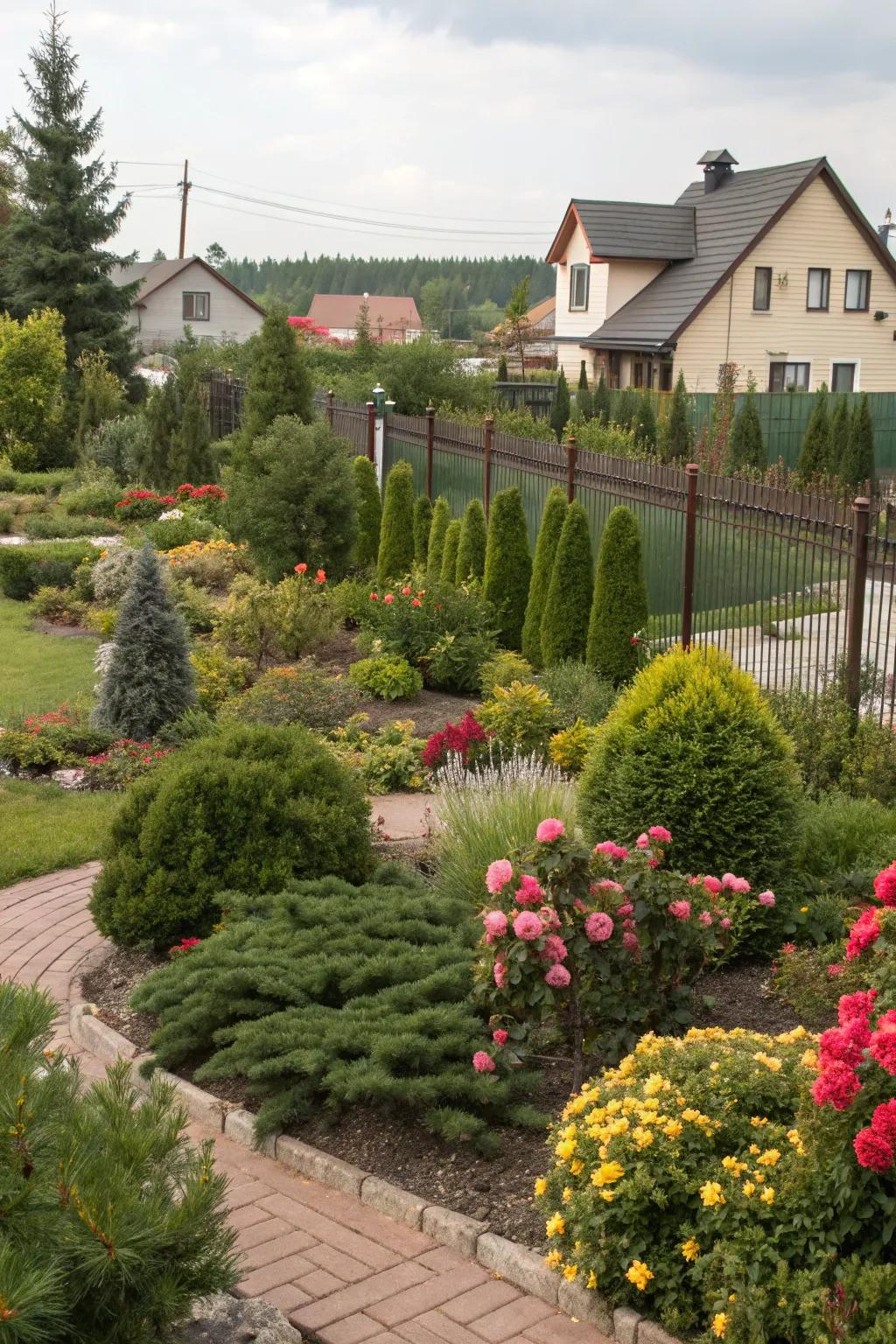
Blend evergreen shrubs with seasonal flowers for year-round interest. In my gardens, this mix keeps things vibrant across all seasons.
Give these a look:
- Garden Evergreen Shrub Seeds: Enhance your garden with lush evergreens for vibrant, year-round greenery and elegance.
- Seasonal Flower Bulb Kit: Plant colorful flowers that bloom in every season, adding bursts of color to your garden.
- Organic Garden Fertilizer: Boost your plants with organic nutrients for healthier, thriving growth all year long.
16. Experiment with Textures
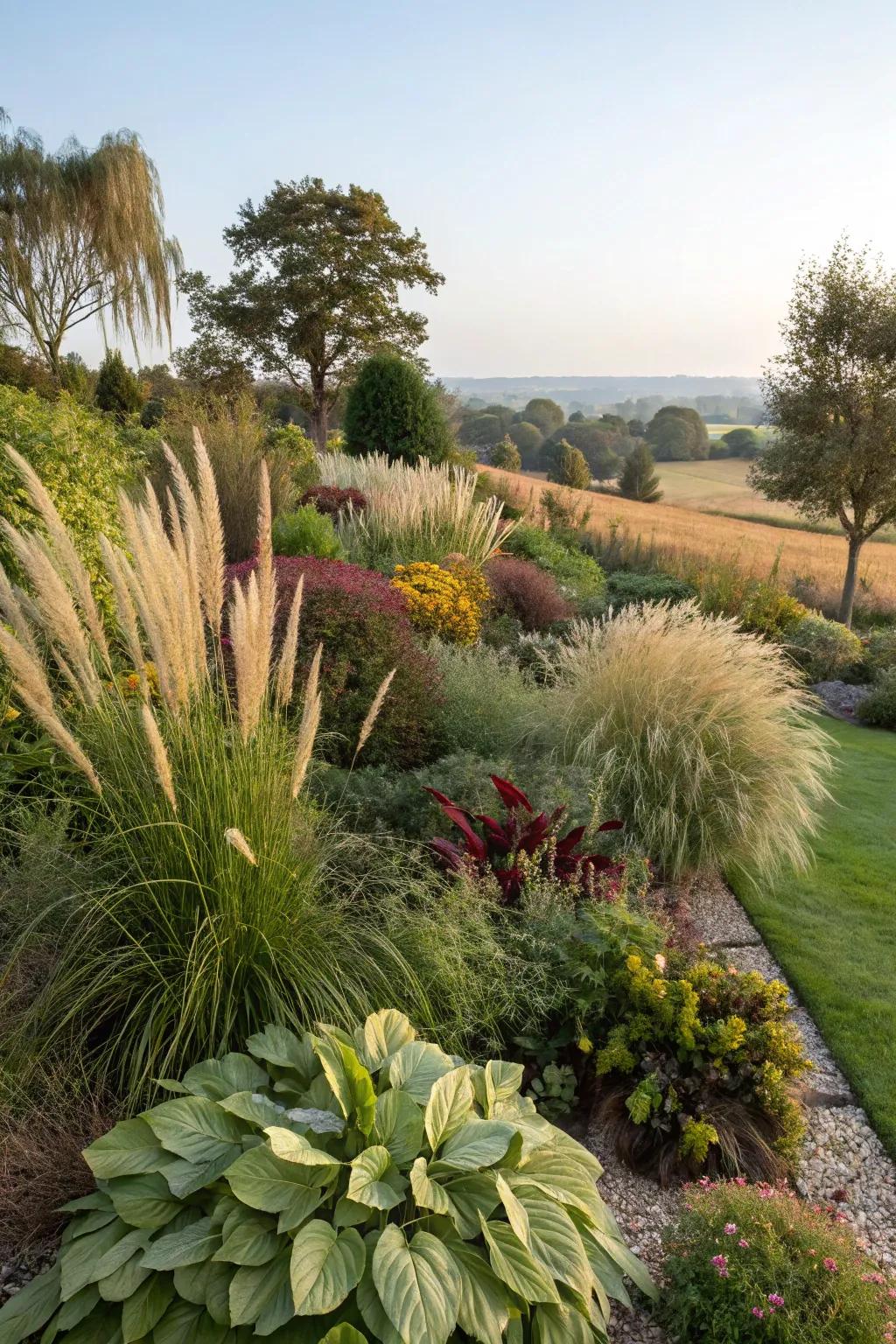
Mix different plant textures for visual interest. Combining smooth, spiky, and feathery plants can create a dynamic landscape, a trick I’ve used to great effect.
Try these:
- Ornamental Grass Seeds: Enhance your garden with ornamental grasses for a spiky, airy texture that stands out.
- Feathery Fern Collection: Add lushness with diverse fern varieties, creating a layered, soft texture in your landscape.
- Textured Foliage Shrubs: Introduce variety with textured shrubs providing a smooth contrast to other garden elements.
17. Opt for Simple Color Schemes
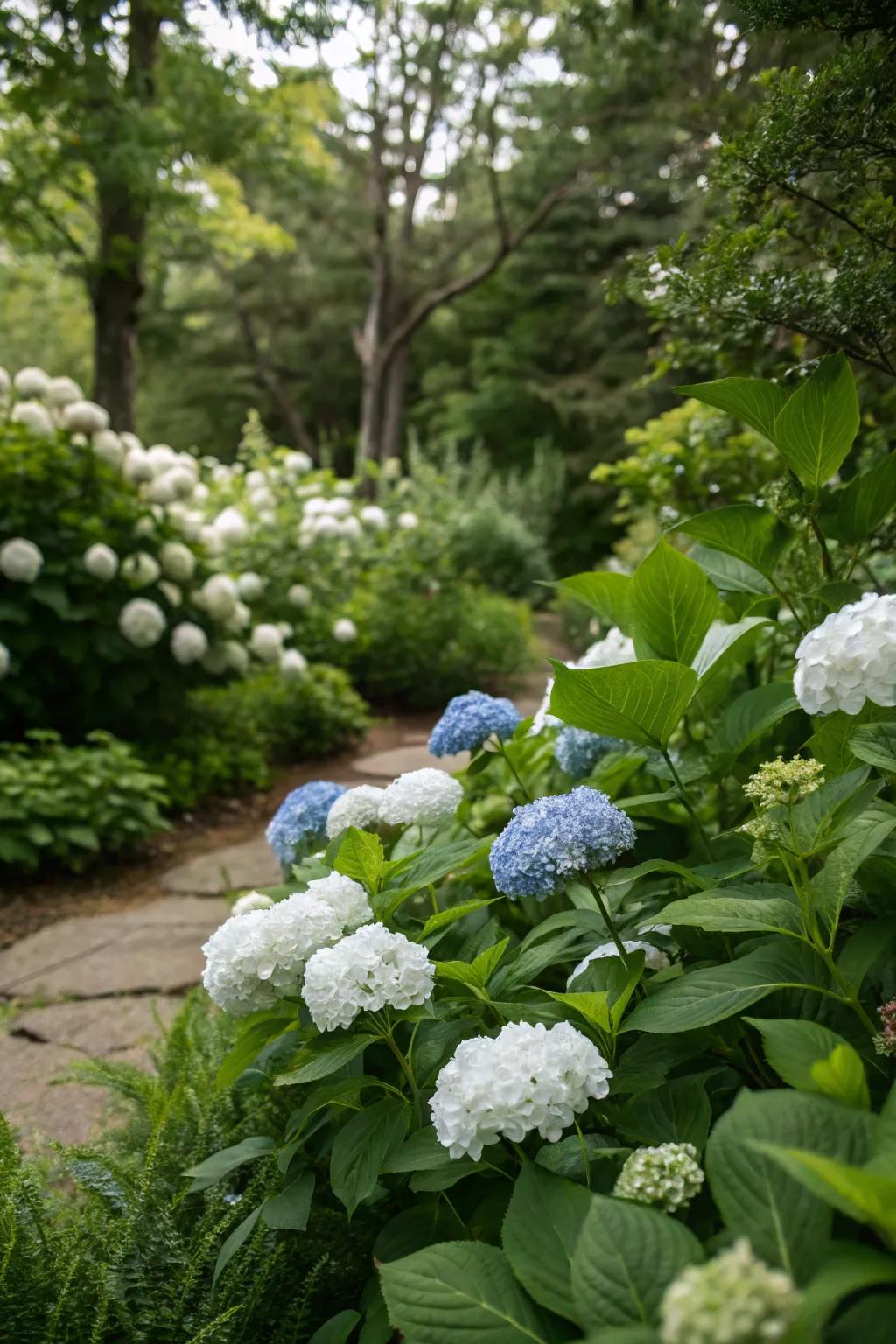
Stick with a simple color palette to create a soothing atmosphere. I’ve found that whites, blues, and greens work well together, offering a calming effect.
Possibly handy products:
- Outdoor White Hydrangea Plants: Enhance your garden with elegant white hydrangeas for a serene and calming effect.
- Blue Garden Ornaments: Incorporate blue garden ornaments to complement your landscape’s soothing color scheme.
- Green Landscape Ground Cover: Add lush green ground cover to blend seamlessly into your natural landscape design.
